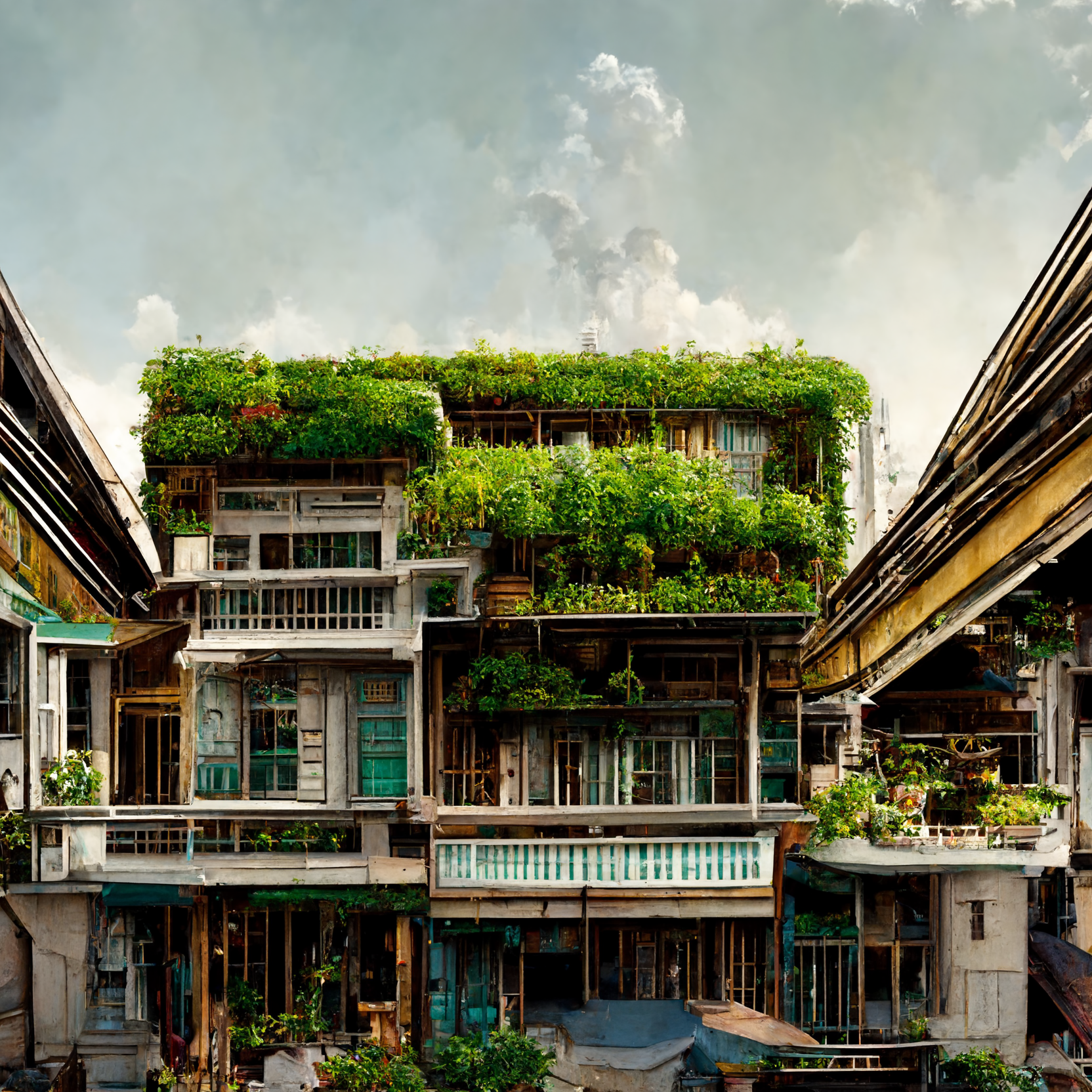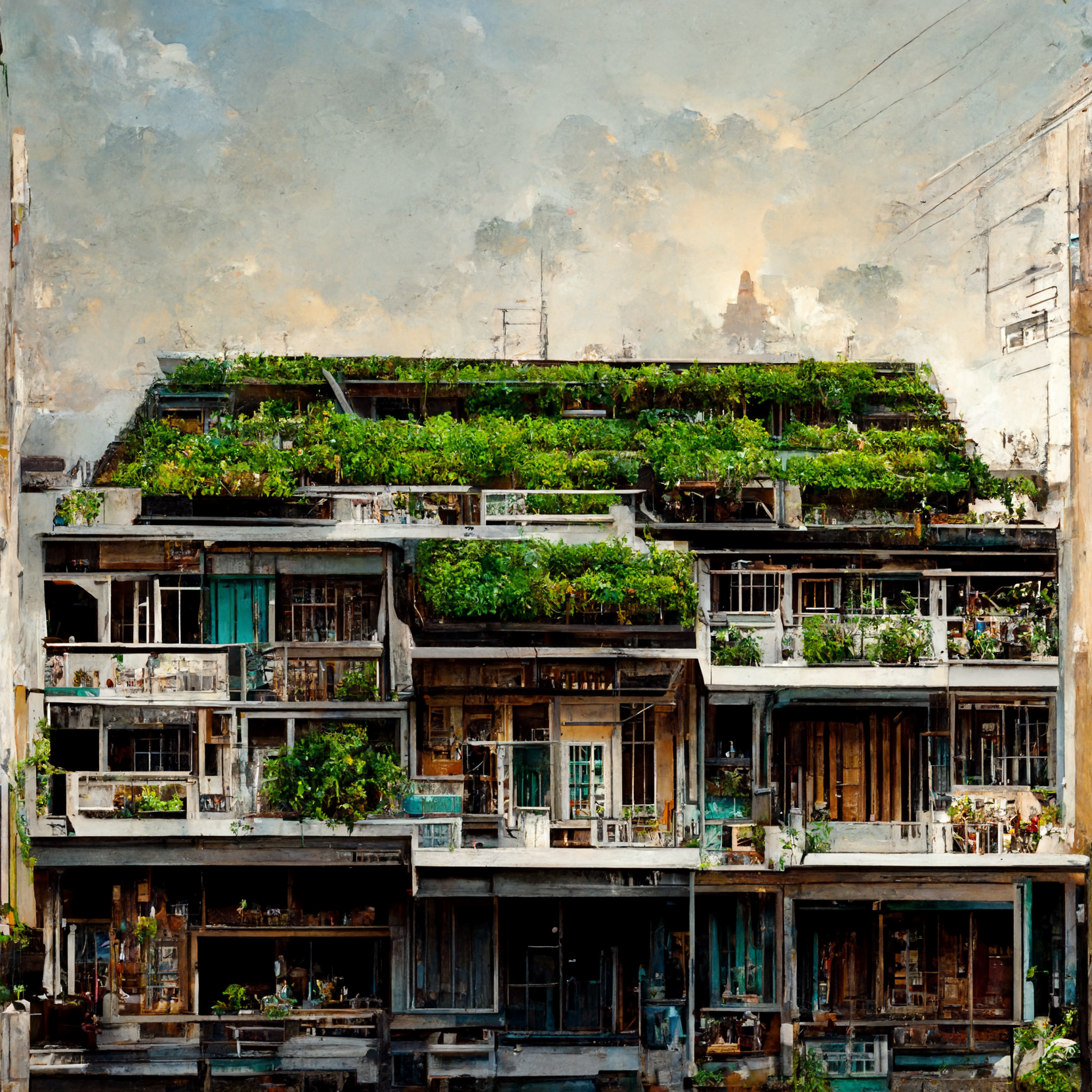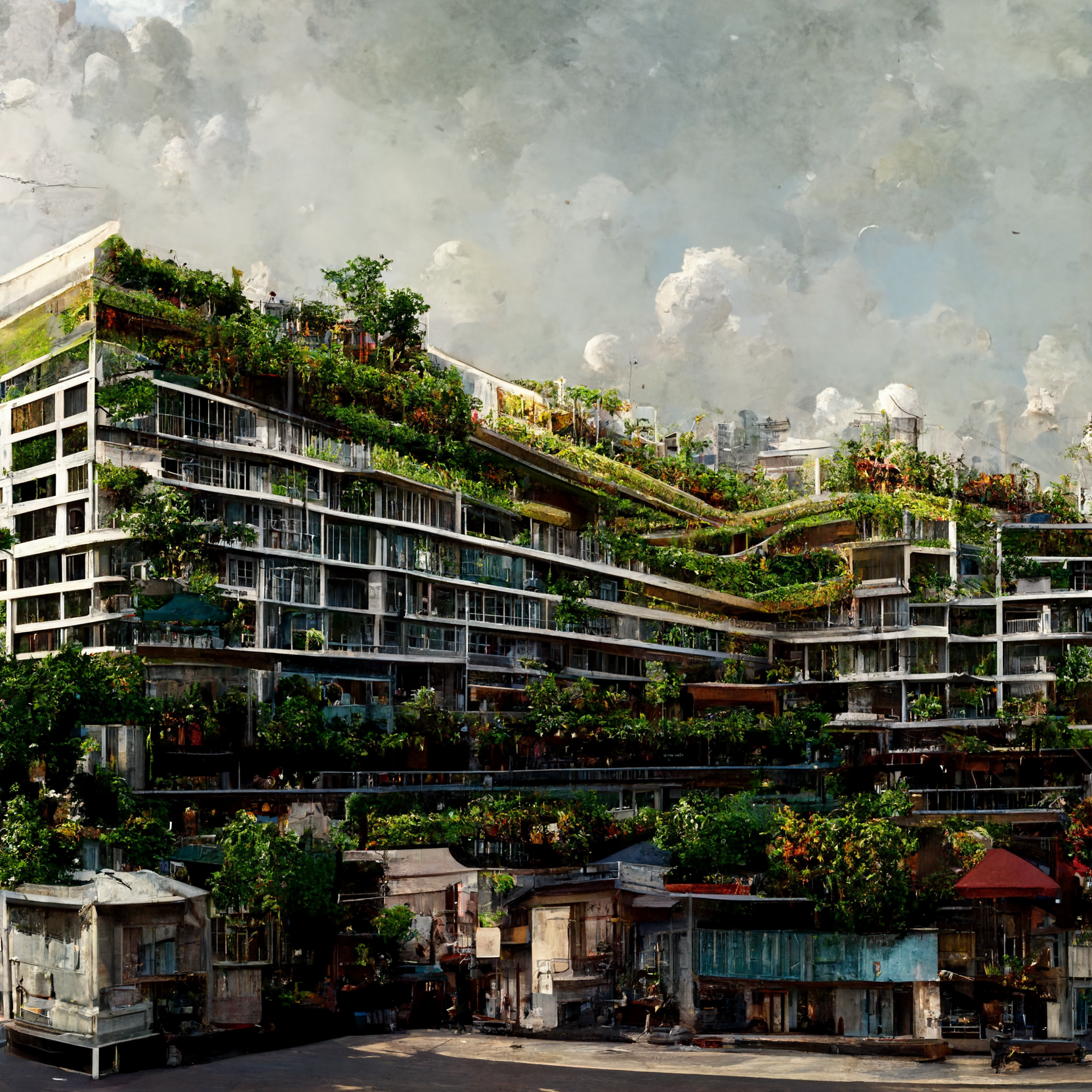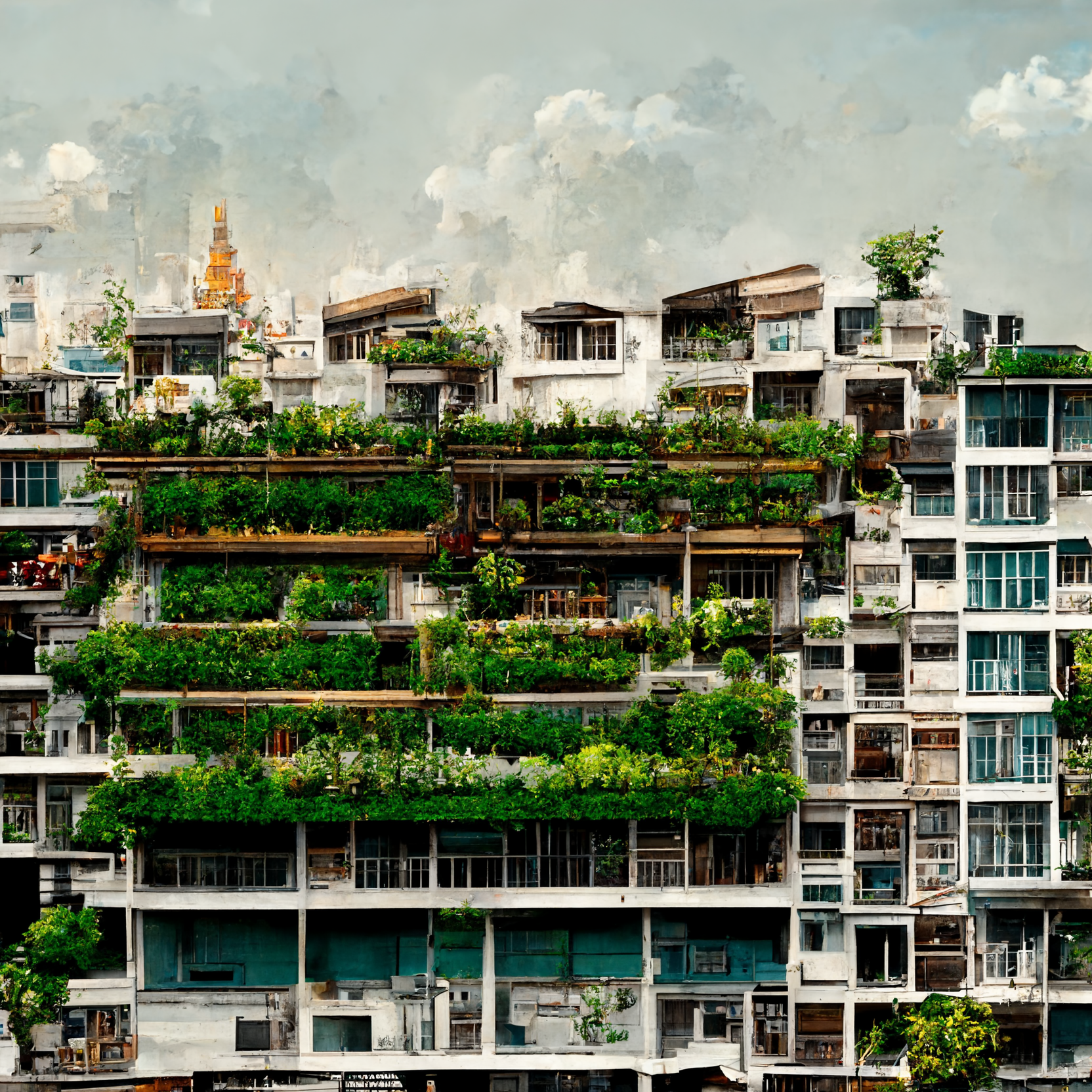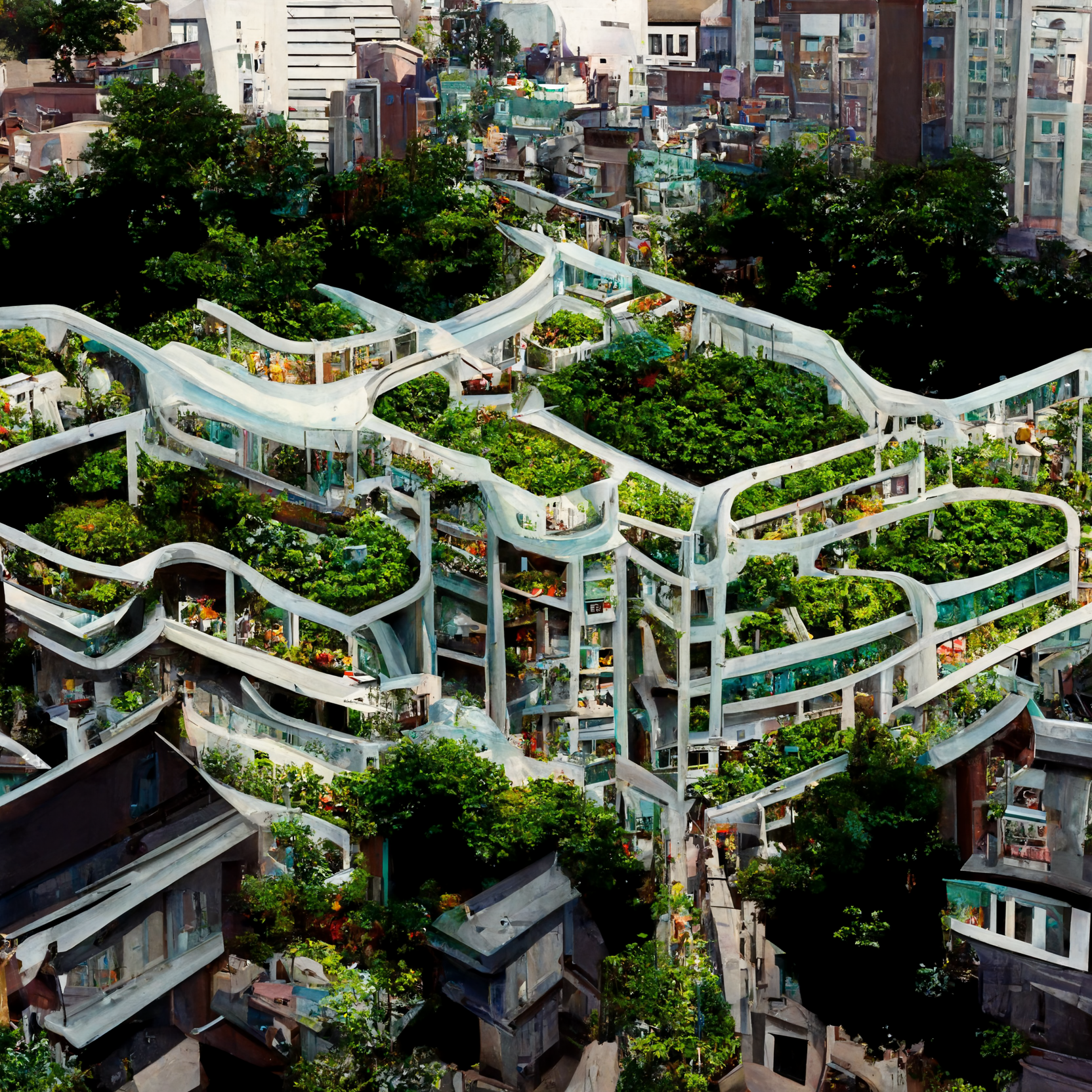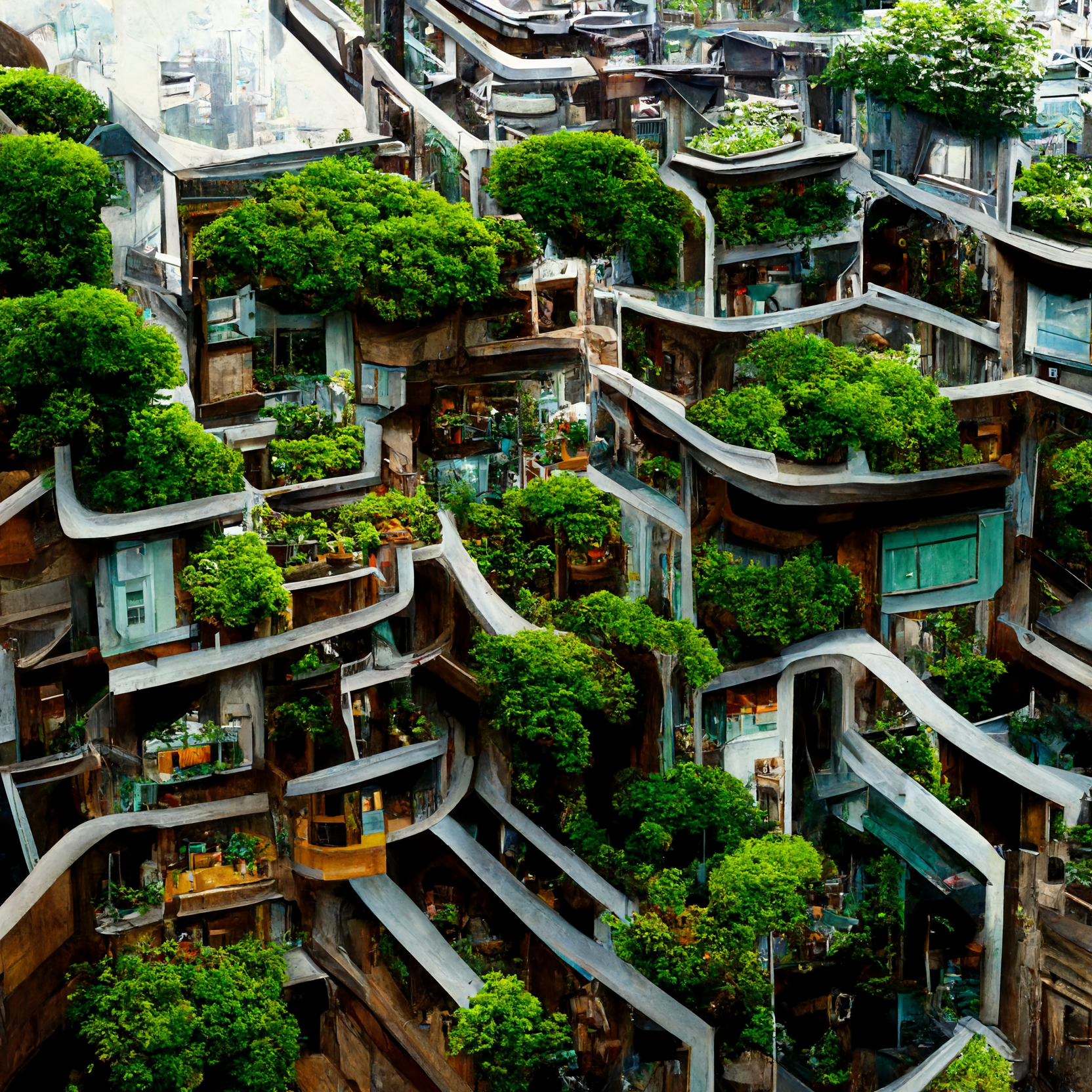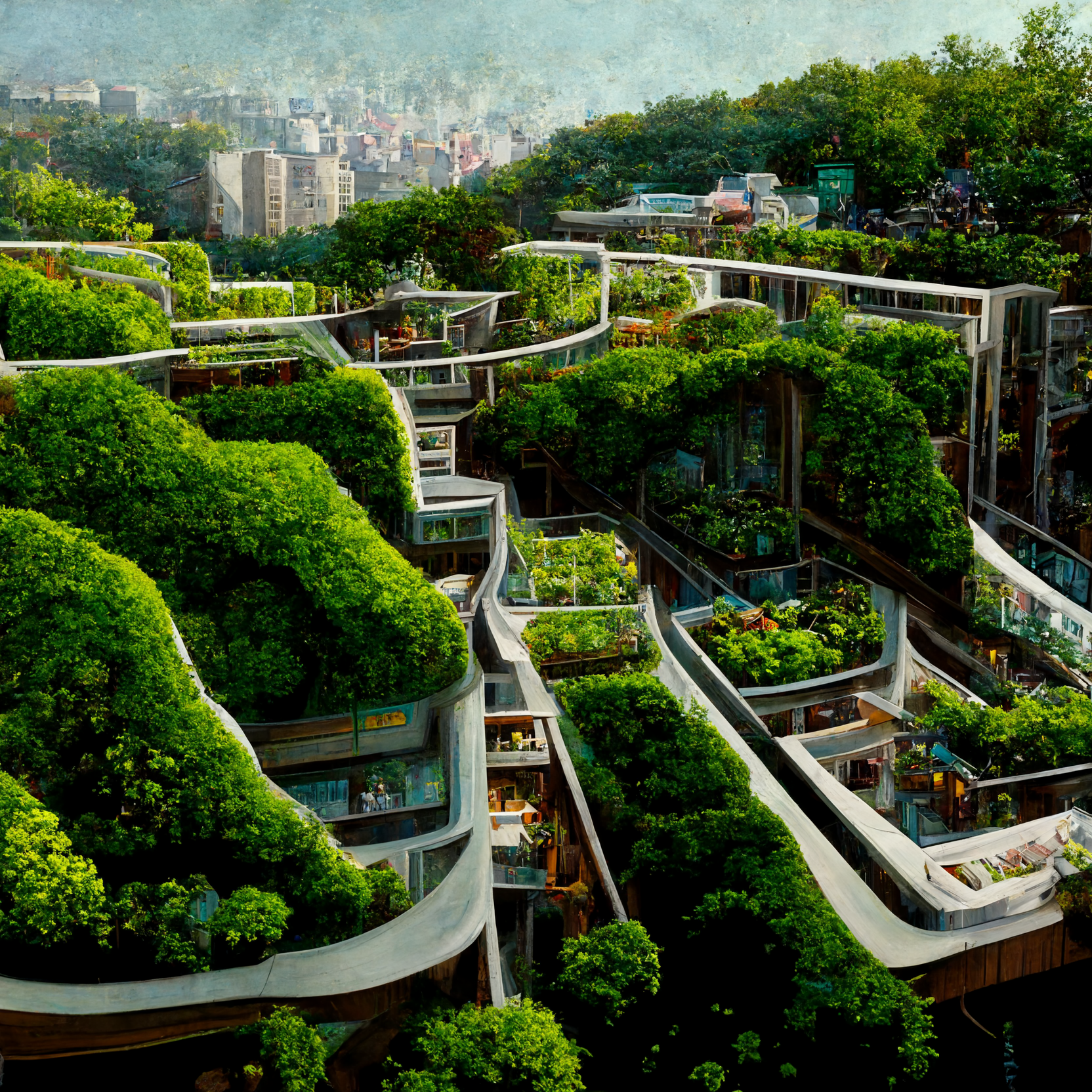Remixing Cities with Cities
Research Project
2019 -
Designing City Architecture from, by and with the imagery of a city - and programs that aren’t part of an exisiting urban fabric, like farming. One example: How would neighborhoods be if we would demand buildings to plant the same area they stand on? Green roofs are an established construction method since generations but rarely built. Thinking only the construction of a building, their maintenance and initial costs is usually used to cancel them. Not so, if you think buildings and their cities circular. Green roofs lower temperatures not only for the spaces below but distributed for outdoor areas and entire neighborhoods too. Direct and indirect temperature sinking results in up 5C or up to 25% of energy savings. When you begin to argue with a building's lifecycle then add the additional recreational qualities not only through roofs that switch from paved deserts to parks but also the cooled outdoor areas that longer usable for activities. Lively streets means lively business. Therefore, cities should have a direct interest in incentising or regulating for green roofs. Such policies could quickly be realised. Nearly all cities regulate neighborhoods with zonings, and other regulations. You only have to update those.
In no particular order, each slideshow presents a different remix within exisisting city fabrics of Bangkok, Seoul.







